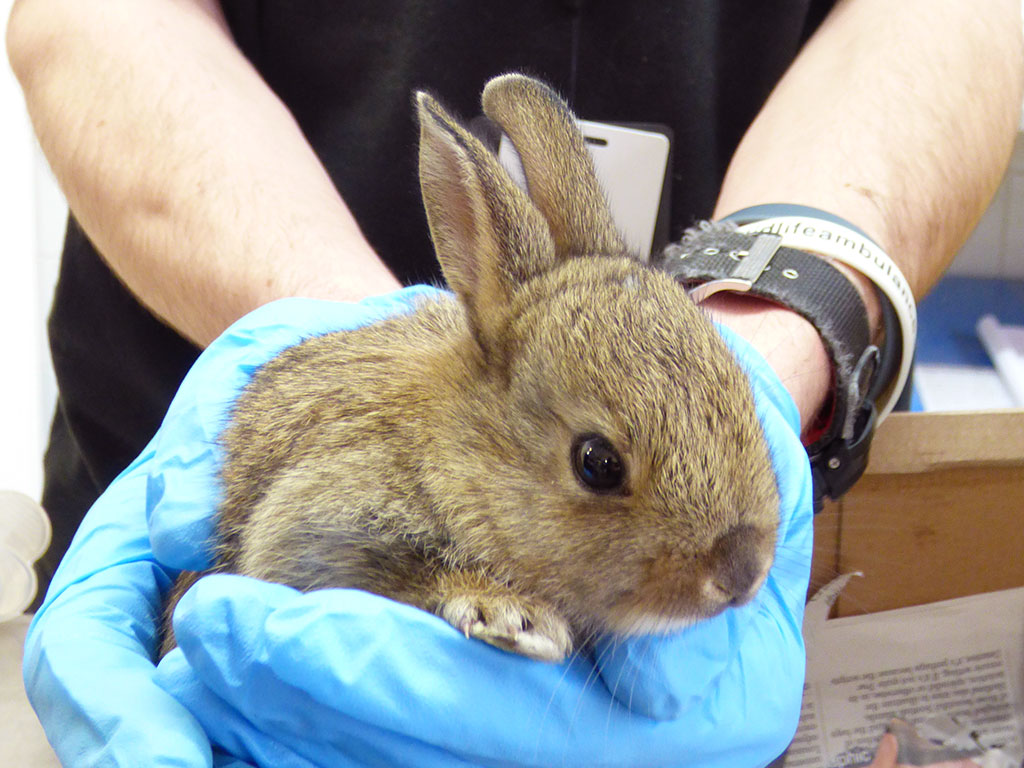
East Sussex WRAS unfortunately cannot deal with domestic rabbits or the capture of escaped pet rabbits.
Although many people do not like wild rabbits, they are an important part of nature’s food chain and can conserve chalk grassland which would otherwise turn to forest if left. What damage rabbits cause can fairly easily be prevented with the use of rabbit proof fencing and tree guards.
Every year millions of rabbits are caused to suffer and targeted by humans using air guns, dogs, snares, ferrets and gassing.
If you do not want rabbits in your garden it is best to try and keep them out by using rabbit proof fencing, which needs to be dug into the ground for at least 12 inches. Some gardeners put fencing up round their vegetable plots to help stop rabbits helping themselves.
Both myxomatosis and VHD are diseases intentionally introduced to manage the rabbit population. While myxomatosis usually displays clear symptoms that are easily recognizable, VHD shows few external signs, making it challenging to diagnose.
Unfortunately, once a rabbit exhibits signs of myxomatosis, its chances of survival are extremely low. In the early stages, the rabbit’s eyes become inflamed and swollen, eventually closing due to the discharge, rendering the rabbit blind. Despite losing their sight, their other senses become heightened, making them elusive to capture. As the disease progresses, rabbits become weaker and more vulnerable, making them easier to approach and handle.
It is crucial to seek veterinary assistance, as euthanasia is often the only humane option. When contacting your nearest veterinary practice, inform them in advance if you are bringing in a rabbit with myxomatosis. To prevent contamination and the spread of the disease to other rabbits, refrain from entering the practice without their approval.
On the other hand, VHD can be challenging to detect and may manifest as a collapsed rabbit without obvious cause. Fortunately, domestic rabbits can be vaccinated against both diseases, offering them protection from these serious health threats.
Catching injured wild rabbits can be challenging, and it’s crucial to approach with caution and patience to avoid accidents. The last thing you want is for the rabbit to dart onto the road and get hit by a car. Even rabbits afflicted with myxomatosis, though blind, can sense your presence as your approach. Using a net is essential for catching rabbits safely. In some cases, guiding a myxomatosis rabbit towards someone holding a net can be effective since they won’t see or feel the person’s presence. It’s particularly tricky to catch road casualty rabbits if they are lively, and approaching from two different angles is usually the best method, although not always successful. Remember to be cautious when attempting to catch any animal near a roadside – your safety comes first.
Rabbits, being highly sensitive animals, are prone to stress and shock, which can be fatal. It is crucial to promptly place them in a dark and quiet box to help them calm down. Avoid carrying them in your arms, stroking, or talking to them. Even if they appear still and calm, they are more like to be frozen in fear. Wild animals do not show fear in the same way as domestic animals or humans.
For hygiene you should handle rabbits wearing gloves or using a towel.
As with any species of wildlife, if it has been caught by another any of the above it should be taken into care and give suitable treatment. Even though there may not be any visible injuries a pin prick puncture wound or invisible internal injury could mean it is suffering in silence. Please do not release such casualties and contact WRAS.
If you disturb a nest, stop what you are doing and attempt to rebuild the nest and cover the young back over.
Accidentally disturbing a rabbit nest is easy due to their deliberate camouflage for protection, making them hard to spot until it’s too late. If you have a wild rabbits living nearby, remember to check for nests regularly and avoid disturbing them by refraining from activities like raking leaves, mowing grass, or trimming hedges and bushes.
If you do disturb a rabbit nest, follow these steps to minimize harm:
If you have any concerns please call for advice.

